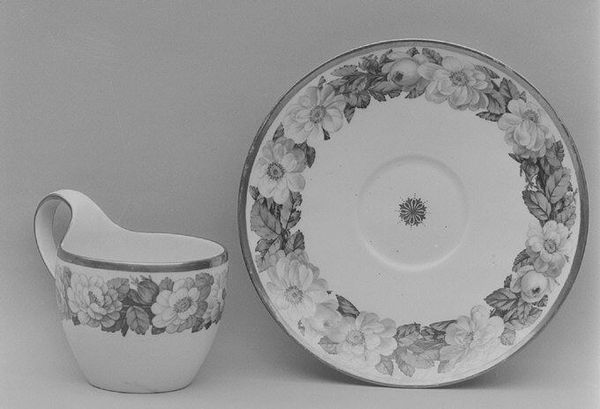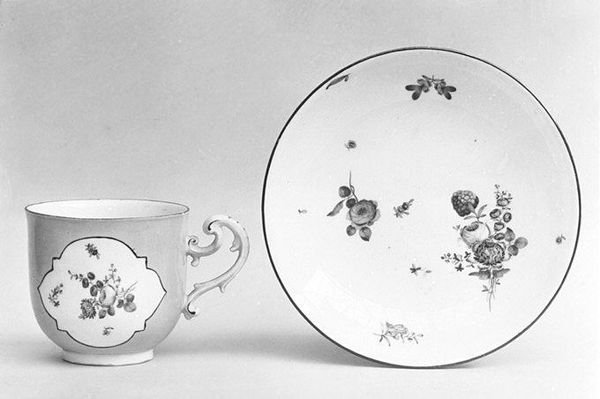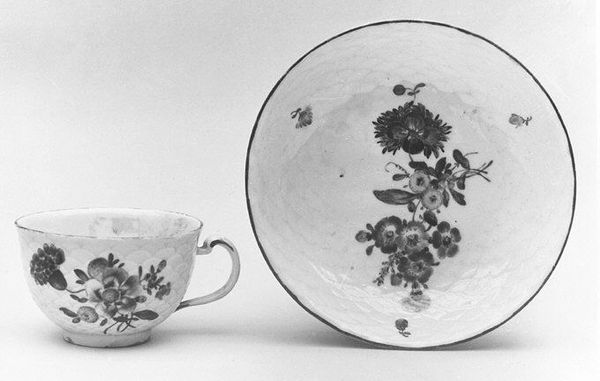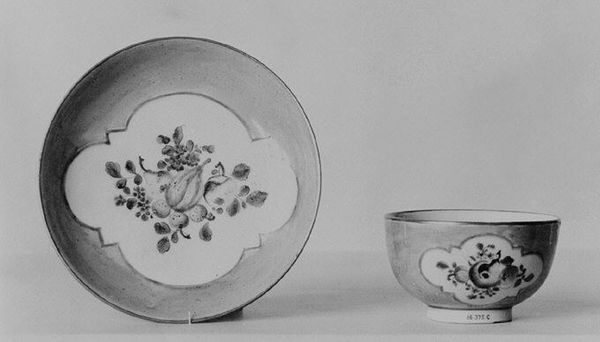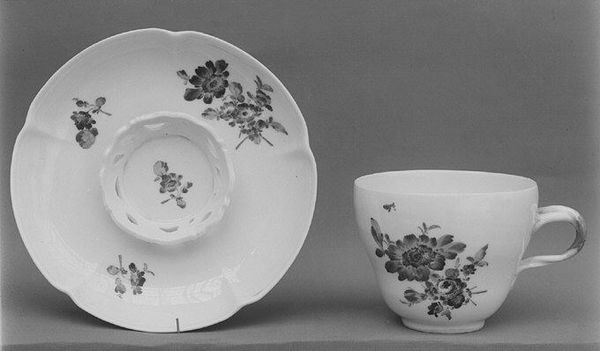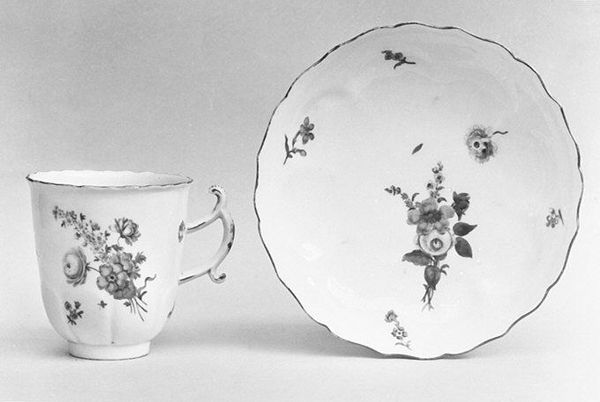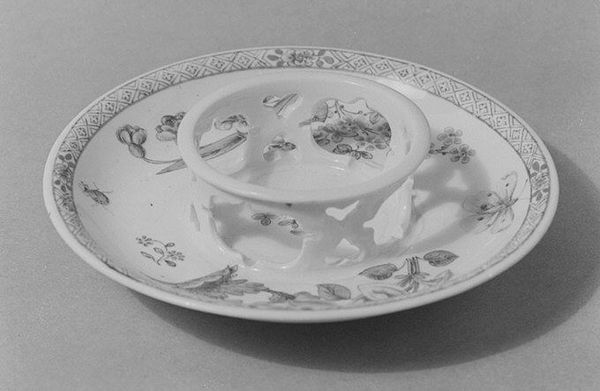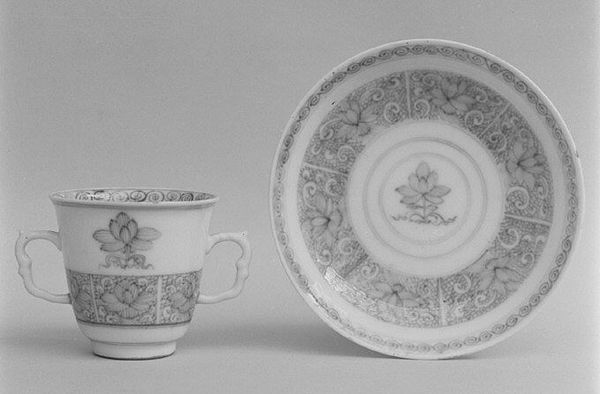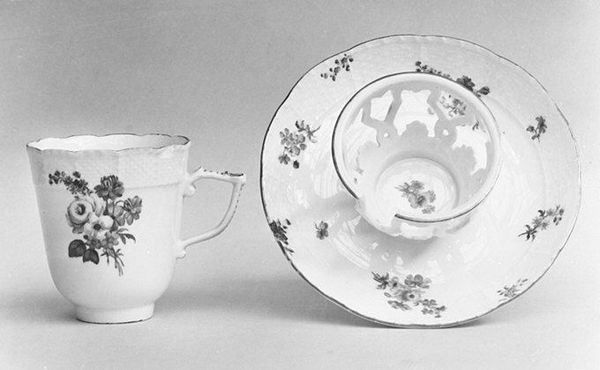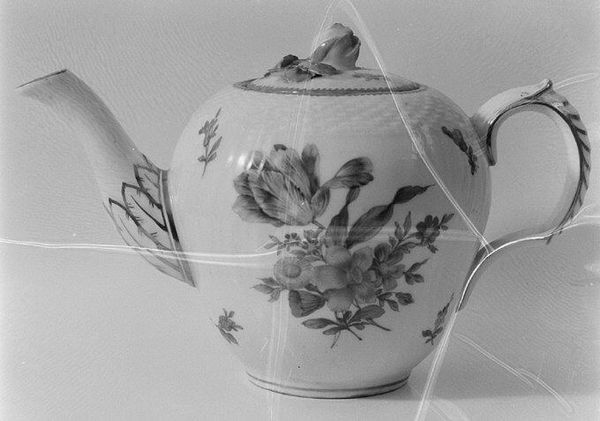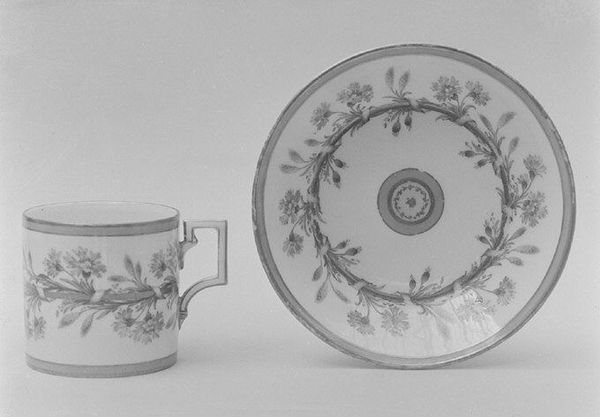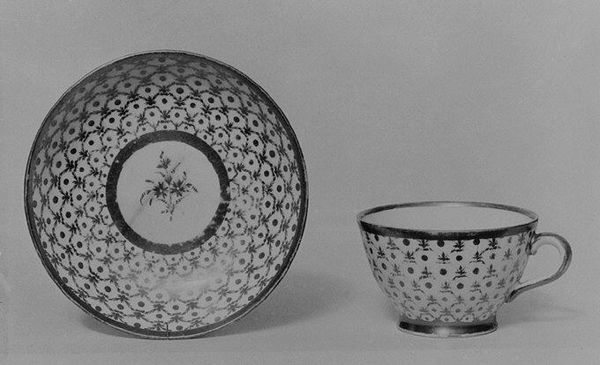
ceramic, porcelain, sculpture
#
ceramic
#
porcelain
#
classicism
#
sculpture
#
decorative-art
Dimensions: Overall (Cup): 2 1/2 × 2 in. (6.4 × 5.1 cm); Diameter (Saucer): 4 1/2 in. (11.4 cm)
Copyright: Public Domain
Editor: Here we have a 19th-century cup and saucer, crafted in porcelain by the Royal Porcelain Manufactory. There’s something so delicate about the floral pattern; it gives the piece a very refined, almost restrained feeling. How do you interpret this work? Curator: It is beautiful, isn’t it? These objects transcend their simple function as tableware; they represent 19th-century class structure and trade. Porcelain, especially pieces of this quality, was a signifier of wealth and taste, accessible to the elite while representing a social gap to the rest of the population. Editor: So, in a way, owning it was making a statement? Curator: Precisely. The delicate floral motifs, too, carry symbolism rooted in European ideals of beauty and refinement. One could see it within the context of gender as well. Consider who was meant to be handling this object daily: women in a domestic sphere. Do you think it challenged or reinforced those roles? Editor: That's an interesting angle. I hadn't thought about who the object was made for in that way. So it reflects beauty, but also societal expectations and gender constraints. Curator: Exactly. It is a fascinating glimpse into the values and structures of the time, and prompts so many interesting questions regarding status and roles. Even decorative arts pieces can become incredibly powerful statements. What is your feeling about it now? Editor: I see so much more complexity than I originally thought. What seemed like just a pretty object actually reveals so much about power dynamics. Curator: Yes, even everyday objects speak volumes when viewed through a critical lens!
Comments
No comments
Be the first to comment and join the conversation on the ultimate creative platform.
